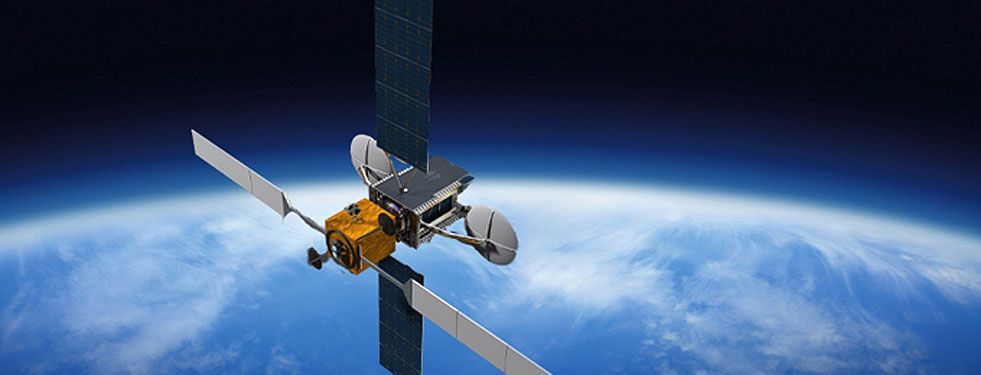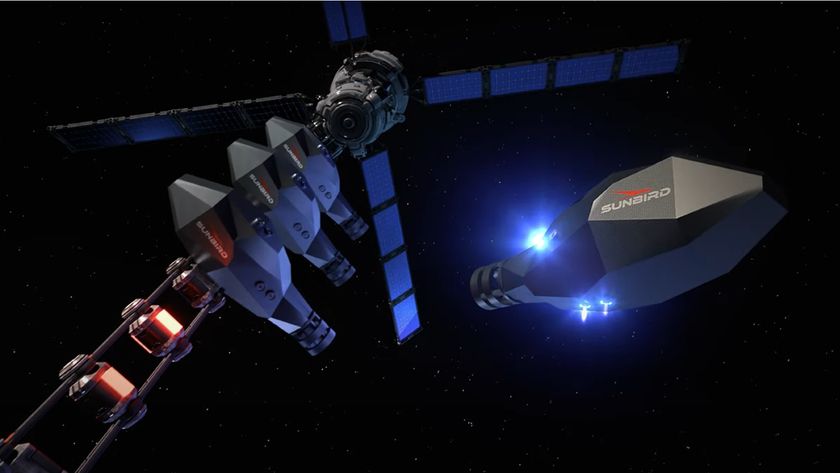New Satellite Will Be Space Mechanic, Gas Station

NEW YORK — A young spaceflight company is building what it hopes will be the ultimate space handyman, a combination repair droid and orbital gas station to serve ailing satellites around Earth.
The company, called ViviSat, is planning to launch a fleet of specially built spacecraft that will be able to attach to other vehicles in Earth orbit that need a pick-me-up.
"We call them Mission Extension Vehicles," ViviSat chief operating officer Bryan McGuirk said Nov. 15 at the 2012 Satellite and Content Delivery Conference and Expo here. "Our job will be to dock with commercial satellites to extend their lives."
ViviSat initially plans to launch two Mission Extension Vehicles, or MEVs, but hopes to eventually expand the fleet to at least 10 craft. The spacecraft are being built by ATK, the company that made the solid rocket motors for NASA's now-retired space shuttles.
ViviSat hopes to become the first company to offer such a satellite refurbishment service. [New Lives For Old Satellites: Vivisat (Video)]
Currently, when communications satellites and other Earth-orbiting spacecraft run out of fuel, they are either sent up into a graveyard-like parking orbit, or de-orbited to destruct in Earth's atmosphere — or worse, left where they are to become space junk, posing a risk to living satellites. Yet aside from running out of fuel, the spacecraft are often still functioning.
"There is a demand for new solutions that can deal with the majority of satellites that can go to end of life with all their subsystems working," McGuirk said. "It is in essence a wasted opportunity for those operators to have to send them to deep space."
Sign up for the Live Science daily newsletter now
Get the world’s most fascinating discoveries delivered straight to your inbox.
A visit from a ViviSat MEV could extend the life of a satellite by up to 10 years — typically three to five years — McGuirk said. The handyman satellites could also redeploy spacecraft, or position them in new orbits.
"We don't see a tailing off of opportunity," he said. "There are a huge number of satellites, many hundreds, in [geosynchronous orbit around Earth] today. There are a substantial number of satellites out there coming to retirement that would be candidates. There is a long-lasting opportunity for us to solve problems in the market."
The project could create a "body shop in the sky," said Lou Zacharilla, director of development for the Society of Satellite Professionals International, a satellite industry group. "I think it's an out-there, forward-thinking venture."
Many in the industry are curious to see whether ViviSat's business takes off.
"I think it's a creative idea," said Arnold Friedman, senior vice president of marketing and sales at the satellite company Space Systems/Loral. "There are pros and cons. We'll see what happens."
Even though ViviSat hasn't nailed down a launch date for its first MEVs, McGuirk said the company has dozens of conversations ongoing with potential customers.
"There's a lot of interest," McGuirk told SPACE.com. At first, many doubted that ViviSat's vision was achievable, but the technology involved is "nothing Earth-shattering," he said, and should not be beyond the company's abilities.
Such a venture could also prove a boon for the problem of space junk, which includes all the spent rocket stages and defunct satellites orbiting Earth that are at risk of colliding with working vehicles.
While McGuirk said cleaning up orbital debris isn't currently part of the company's business model, the issue could be a motivating factor for satellite operators to hire ViviSat to reduce their liability for dead spacecraft.
ViviSat isn't the only firm aiming to build orbital mechanics. Another aerospace company, MacDonald, Dettwiler and Associates Ltd. (MDA), is also working on a new spacecraft that could refuel and repair aging vehicles in orbit.
This story was provided by SPACE.com, a sister site to LiveScience. Follow Clara Moskowitz on Twitter @ClaraMoskowitz or SPACE.com @Spacedotcom. We're also on Facebook & Google+.














